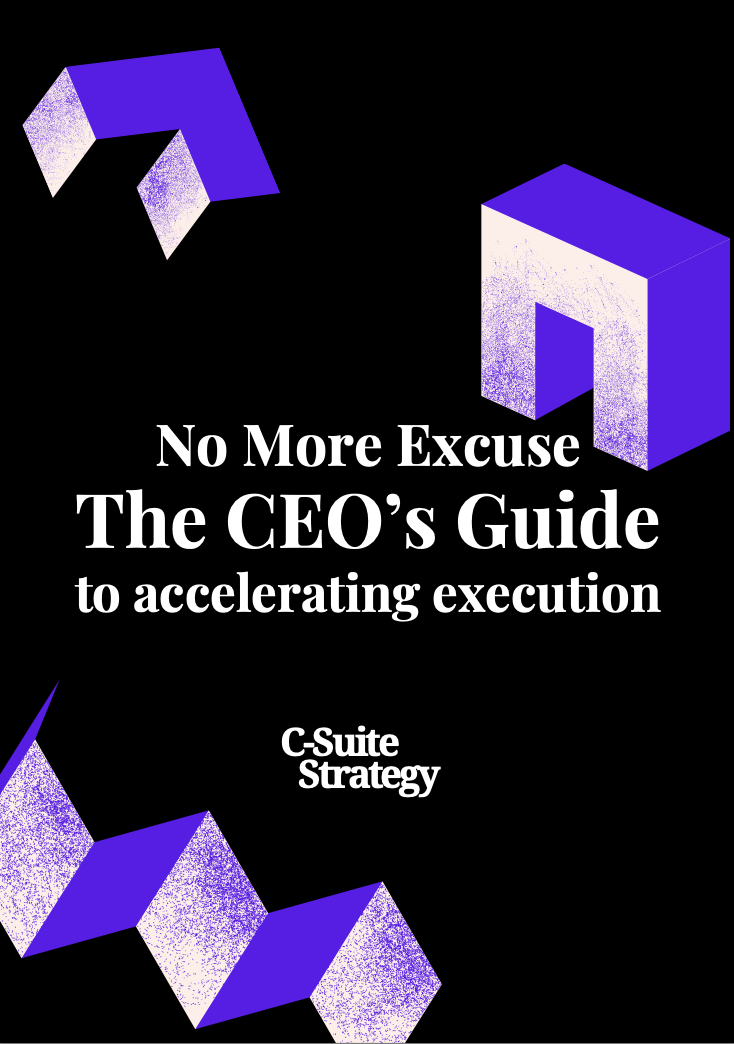
Understanding CEO Positioning
Decoding the Essence of Effective Leadership
At the heart of every thriving company lies a CEO who knows the importance of effective positioning. It's not merely about the visibility or popularity of being a CEO; it's about strategically sculpting your leadership presence to drive company success. This positioning is the anchor that holds together a CEO's role across diverse responsibilities, from driving strategy to managing executive relations.
Understanding CEO positioning necessitates a dive into the dynamic between corporate vision and strategic execution. A misalignment here can shake the very core of company structure. Therefore, it is imperative for top executives to reflect on how their positioning helps or hinders corporate progression. Establishing a clear vision that aligns with strategic goals is as much about intuitive understanding as it is about informed decision-making.
Incorporating insights like CEO coaching can unlock leadership potential and refine this nuanced craft. Unlocking these potentials enables a more robust profile that resonates authentically across all channels, including LinkedIn social media engagements and traditional media exposure.
As an executive leader, your position becomes a meld of personal branding, thought leadership, and strategic communications. This multifaceted approach not only reinforces your executive reputation but also dictates how effectively you engage with industry trends and adapt to market changes. The strength of your leadership is reflected in how well these elements unify under your positioning strategy, resulting in an influential legacy built on authenticity and resilience.
Aligning Vision with Strategy
Aligning Vision with Concrete Actions
For CEOs, translating a vision into actionable strategies is not just a task but an art. Clear alignment between a company's vision and its strategic initiatives is vital for successful CEO positioning. Without this alignment, a CEO risks becoming disconnected from both their executive team and the wider business landscape.
To genuinely align vision with strategy, CEOs must regularly communicate their aspirations within the organization, ensuring that all team members comprehend and embrace the objectives. A well-defined vision acts as a compass, guiding executives in making decisions that not only bolster the company's reputation but also promote organizational growth.
- Leverage strategic communication: Consistent messaging helps maintain alignment. Digital platforms, from emails to internal portals, serve as effective channels for ongoing communication.
- Engage with stakeholders: Regular interactions with stakeholders, including employees, investors, and partners, provide valuable insights into aligning strategies with market expectations.
- Monitor industry trends: Staying on top of industry trends enables CEOs to refine their positioning and adjust strategies as needed, thereby securing their place as thought leaders.
Additionally, by fostering a culture of coaching and development, CEOs can enhance their strategy execution, further aligning their vision with actionable outcomes. Cultivating this environment encourages continuous improvement and innovation, reinforcing the executive's positioning as a dynamic leader in the industry.
Building a Personal Brand
Crafting a Distinctive Executive Persona
In the competitive landscape of modern business, a CEO's personal brand is as crucial as the company's brand itself. Establishing a strong personal brand not only enhances executive positioning but also solidifies a CEO's role as a thought leader within the industry. This involves a strategic approach to how you present yourself across various platforms, particularly in the digital realm.
To effectively build your personal brand, consider the following strategies:
- Define Your Unique Value Proposition: Identify what sets you apart from other leaders in your industry. This could be your innovative approach to business, your commitment to sustainability, or your expertise in a particular niche.
- Leverage Social Media: Platforms like LinkedIn are invaluable for CEOs to share insights and engage with a broader audience. Regularly posting content that reflects your expertise and vision can enhance your visibility and credibility.
- Engage in Thought Leadership: Contribute articles, participate in industry panels, and speak at conferences. These activities not only boost your profile but also position you as a leader in your field.
- Collaborate with Communications Teams: Work closely with your company's public relations and marketing teams to ensure your personal brand aligns with the company's values and goals. This alignment is crucial for maintaining a consistent message.
Building a personal brand is not a one-time effort but an ongoing process that requires attention and adaptation. By consistently refining your executive persona, you can effectively influence your company's reputation and drive business success.
Navigating Stakeholder Relationships
Fostering Strong Stakeholder Engagement
In the realm of CEO positioning, cultivating robust relationships with stakeholders is paramount. As a CEO, your ability to navigate these relationships can significantly impact your company’s reputation and success. Stakeholders, ranging from employees and investors to customers and the media, are integral to your business ecosystem. Building trust and maintaining open lines of communication with them is essential.
Effective stakeholder engagement begins with understanding their needs and expectations. This requires a proactive approach, where you actively listen and respond to their concerns. Regularly engaging with stakeholders through various channels, such as social media platforms like LinkedIn, can enhance your visibility and reinforce your position as a thought leader in your industry.
Utilizing Strategic Communication
Strategic communication is a critical component of executive positioning. As a CEO, your communication style and the content you share can shape perceptions and influence stakeholder attitudes. Collaborating with communications teams to craft clear and consistent messages helps in aligning your personal brand with the company’s vision and strategy.
Moreover, leveraging public relations and media engagements can amplify your message and strengthen your executive profile. By positioning yourself as a credible source of industry insights and trends, you not only elevate your personal brand but also enhance the company’s reputation.
Building a Network of Influence
Networking is a powerful tool for CEOs aiming to solidify their position within the business landscape. Establishing connections with other leaders and executives can open doors to new opportunities and collaborations. Participating in industry events and forums allows you to share your expertise and learn from others, further cementing your status as a thought leader.
Ultimately, the art of CEO positioning involves a delicate balance of strategic communication, stakeholder engagement, and continuous adaptation to market changes. By mastering these elements, you can effectively navigate the complexities of leadership and drive your company towards sustained success.
Adapting to Market Changes
Responding Agilely to Market Dynamics
In today’s fast-paced business environment, leaders must adeptly steer their companies through fluctuating market conditions to ensure enduring success. Executives who understand how their positioning strategies play a critical role in navigating these changes can reposition to seize new opportunities while mitigating potential risks.
Fortune CEOs thrive by proactively assessing industry trends and integrating insights into their organizations. This capability is crucial for maintaining a competitive edge, especially as industries undergo digital transformation and evolving consumer demands.
Here are key tactics for CEOs to navigate these shifts efficiently:
- Stay Informed: Align with market influencers and thought leaders to gather diverse perspectives on emerging trends. Regular engagement with industry reports and participation in relevant forums can provide foresight on market trajectories.
- Leverage Data: Use robust analytics to forecast changes and pivot your strategy timely. Data-driven decision-making offers a solid foundation for adjusting your positioning as necessary.
- Social Media Savvy: Utilize platforms like LinkedIn for gauging market sentiment and connecting with other executives. Crafting a compelling online profile can amplify your leadership communication and bolster the company's reputation.
- Adaptability: Encourage a culture of flexibility within your organization. Foster adaptive strategies that empower your teams to quickly respond to changes and capitalize on new business opportunities.
Central to this approach is the ability of top leaders to redefine their personal and company brands when circumstances demand. By embracing this mindset, executives position themselves to effectively guide their organizations through inevitable market alterations.
Leveraging Technology for Leadership
Integrating Technological Advancements into CEO Leadership
In today's digital landscape, leveraging technology is indispensable for CEO positioning and enhancing the overall effectiveness of an executive's role. As technological advancements continuously reshape industries, CEOs need to embrace digital tools to maintain their competitive edge and solidify their standing as forward-thinking leaders.
First and foremost, a robust CEO communication strategy is vital. This involves harnessing social media platforms like LinkedIn to disseminate insightful content that establishes the CEO as a thought leader in the industry. By sharing expert opinions and company updates, CEOs can actively shape public perception and enhance their thought leadership. Utilizing these platforms effectively can also foster closer connections with stakeholders, complementing the stakeholder relationship strategies you’ve developed.
Furthermore, technology can bolster a company's internal operations. Tools that improve business analytics and decision-making processes should be leveraged to align the CEO’s vision with strategic objectives, as previously discussed. A CEO's adeptness with digital tools can greatly amplify their influence over the company’s direction and help in adapting to ever-evolving industry trends.
In addition to internal operations, a CEO’s role in executive positioning through digital channels is crucial. By staying informed on the latest trends and technologies, executives can tailor their strategies to not only meet market demands but also set new benchmarks for innovation.
In summary, by integrating technology into their leadership approach, executives can enhance their personal brand while driving company success. The synergy between technology and leadership not only enhances the CEO's positioning within the organization but also strengthens their external profile, positioning them as innovative leaders in a rapidly evolving world.














